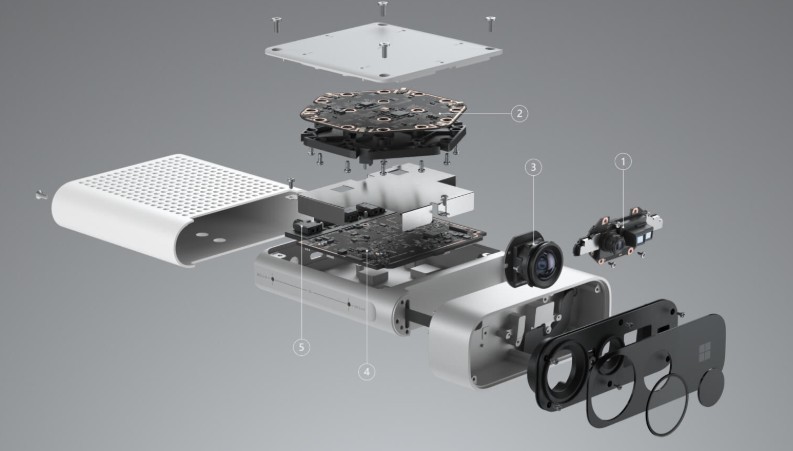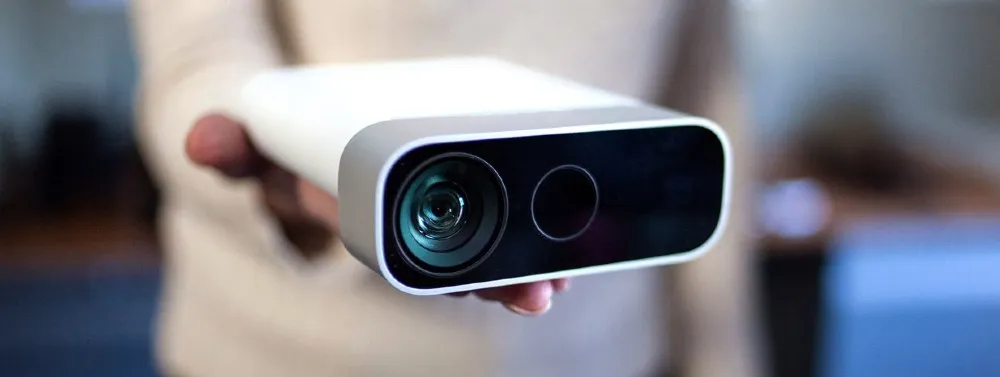Microsoft detailed a new version of its Kinect depth sensing device — now called Azure Kinect — in connection with its HoloLens 2 announcement.
Microsoft executives in Barcelona, Spain today for Mobile World Congress revealed the $3,500 HoloLens 2 augmented reality headset. The new standalone AR headset promises a big step forward in functionality from the original device, which launched in 2016. Alongside this reveal, Microsoft opened pre-orders for its Azure Kinect DK at $399.
Orders placed now should start shipping by June 27, according to the Microsoft website, when “new SDKs will be available.”
Azure Kinect DK

To be clear, the new device isn’t a consumer product or replacement for the Xbox version of Kinect. The original motion-sensing gadget made quite the splash when it released in 2010. Interest faded quickly, though, and developers stopped making games for Kinect.
Instead, Microsoft positions the new Azure Kinect as a developer kit. The system features a 1 megapixel depth sensor, 7 microphone array, 12 megapixels RGB video camera and inertial sensors for spatial and orientation tracking. One big selling point for developers could be the “External sync pins to easily synchronize sensor streams from multiple Kinects simultaneously.” That means it should be possible to arrange Kinects in large arrays for larger-scale data collection. Microsoft says the device doesn’t need a cloud service to operate. It can be combined, however, with “Azure services to enable complete solutions.”
Microsoft pursues a wide range of VR and AR technologies. The company’s 3D capture studios, for example, produce detailed scans of real world performers. Unfortunately, these capture studios are only in major cities and require time and money to use. Could new depth-sensing systems like Azure Kinect one day be used to provide similar capture areas in many more places? Right now we don’t know what quality of capture might be possible with multiple Azure Kinects. Nonetheless, we’ll be curious to see what developers end up doing with an array of these sensors viewing a single space.


























